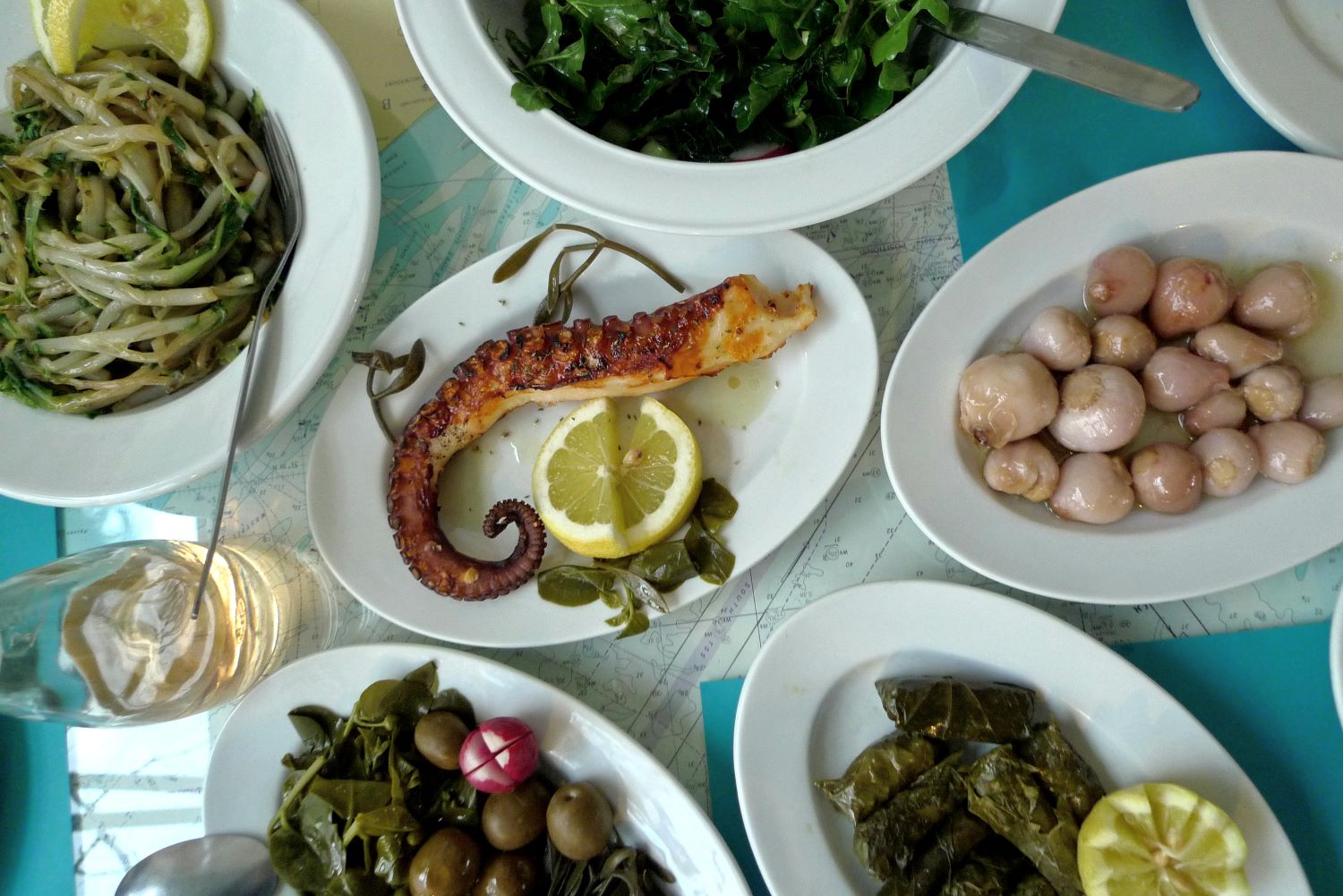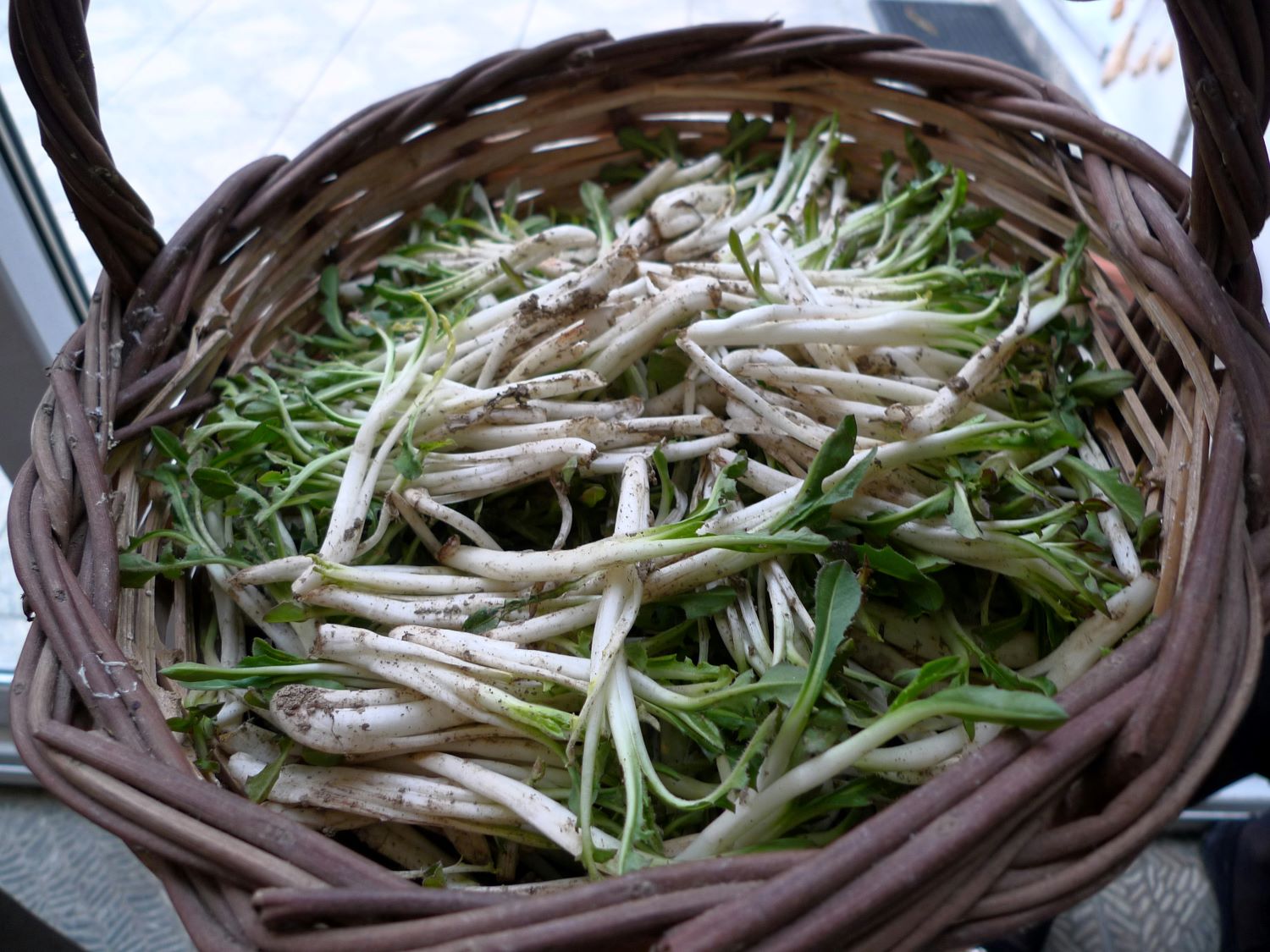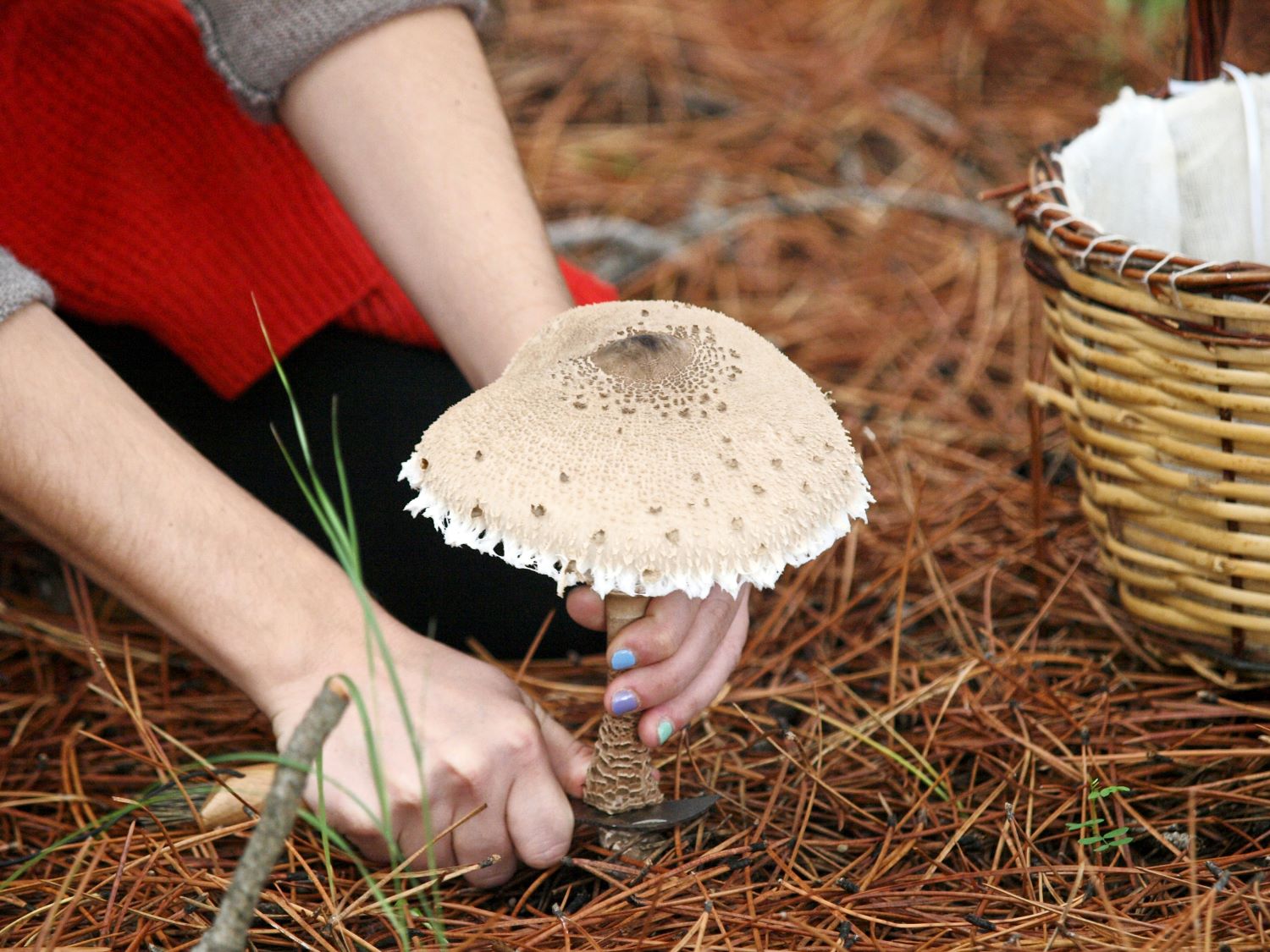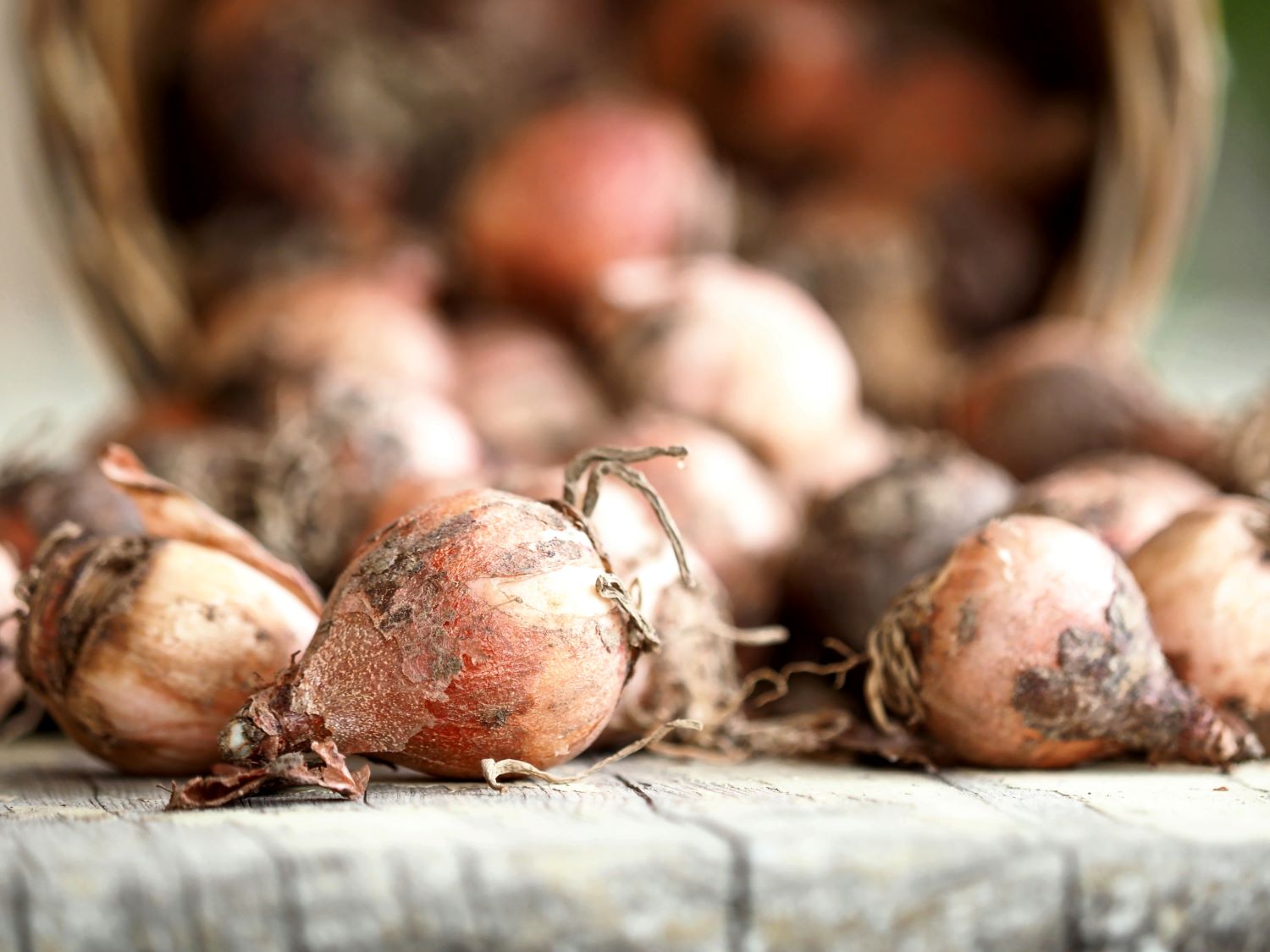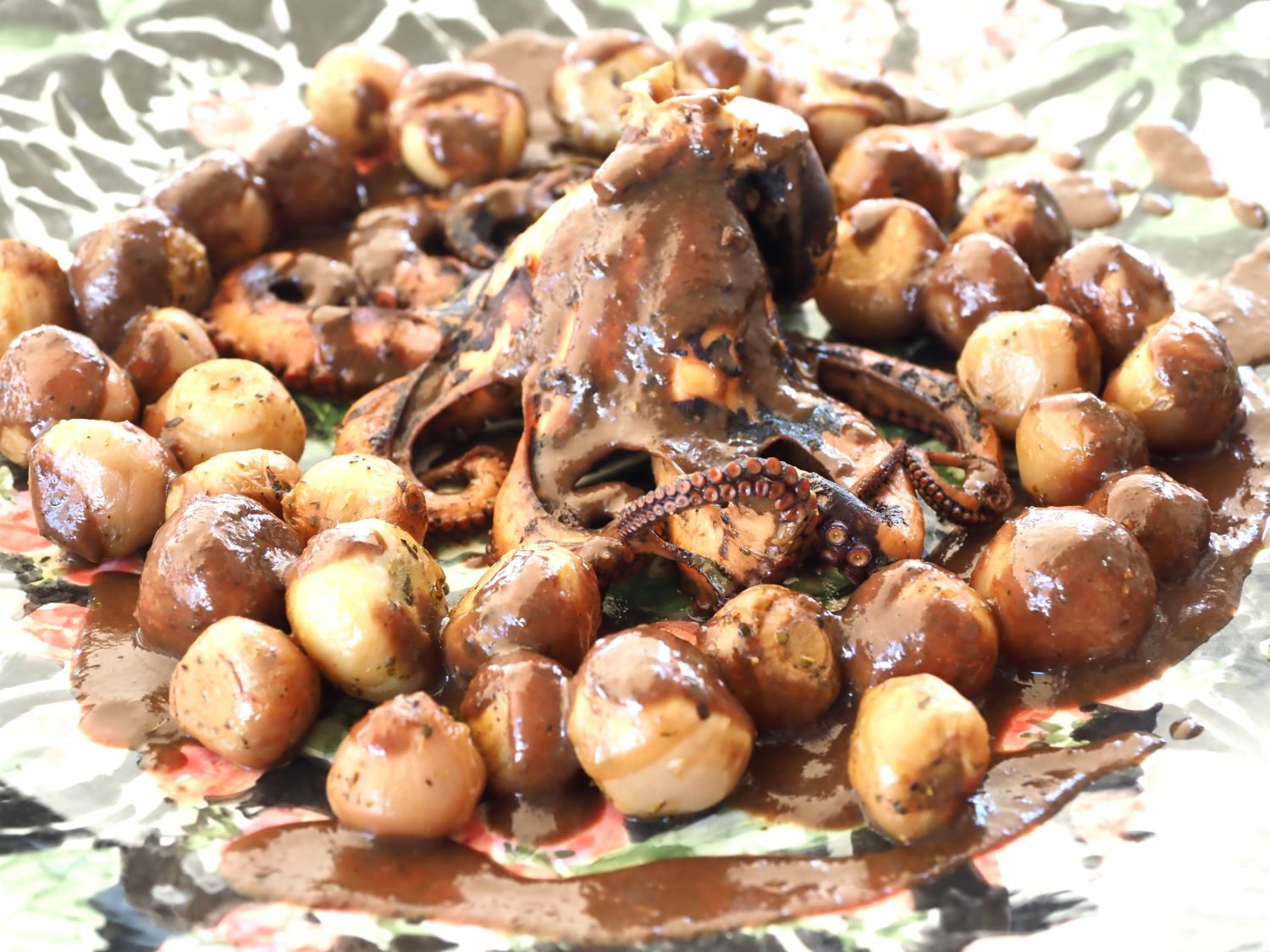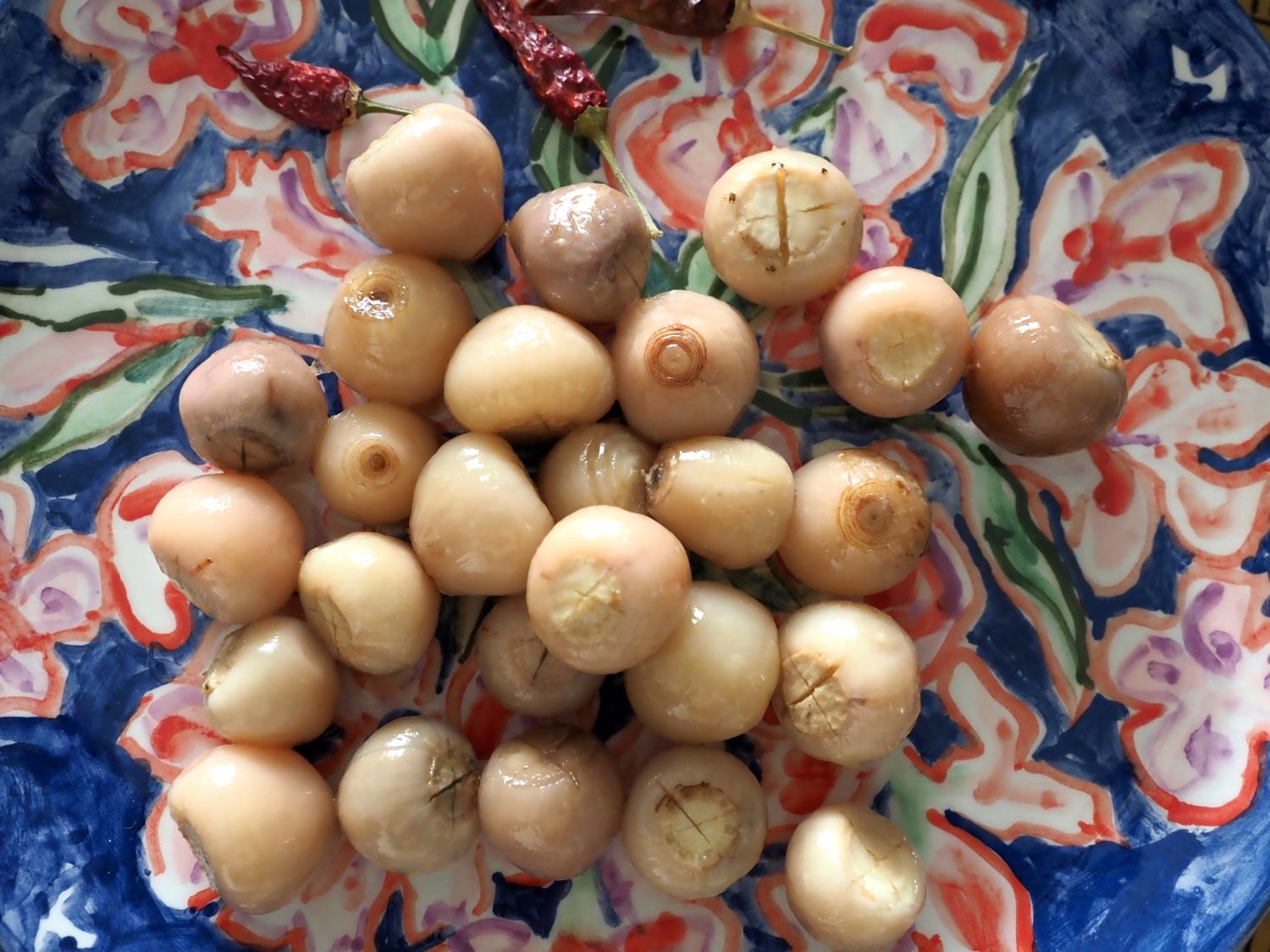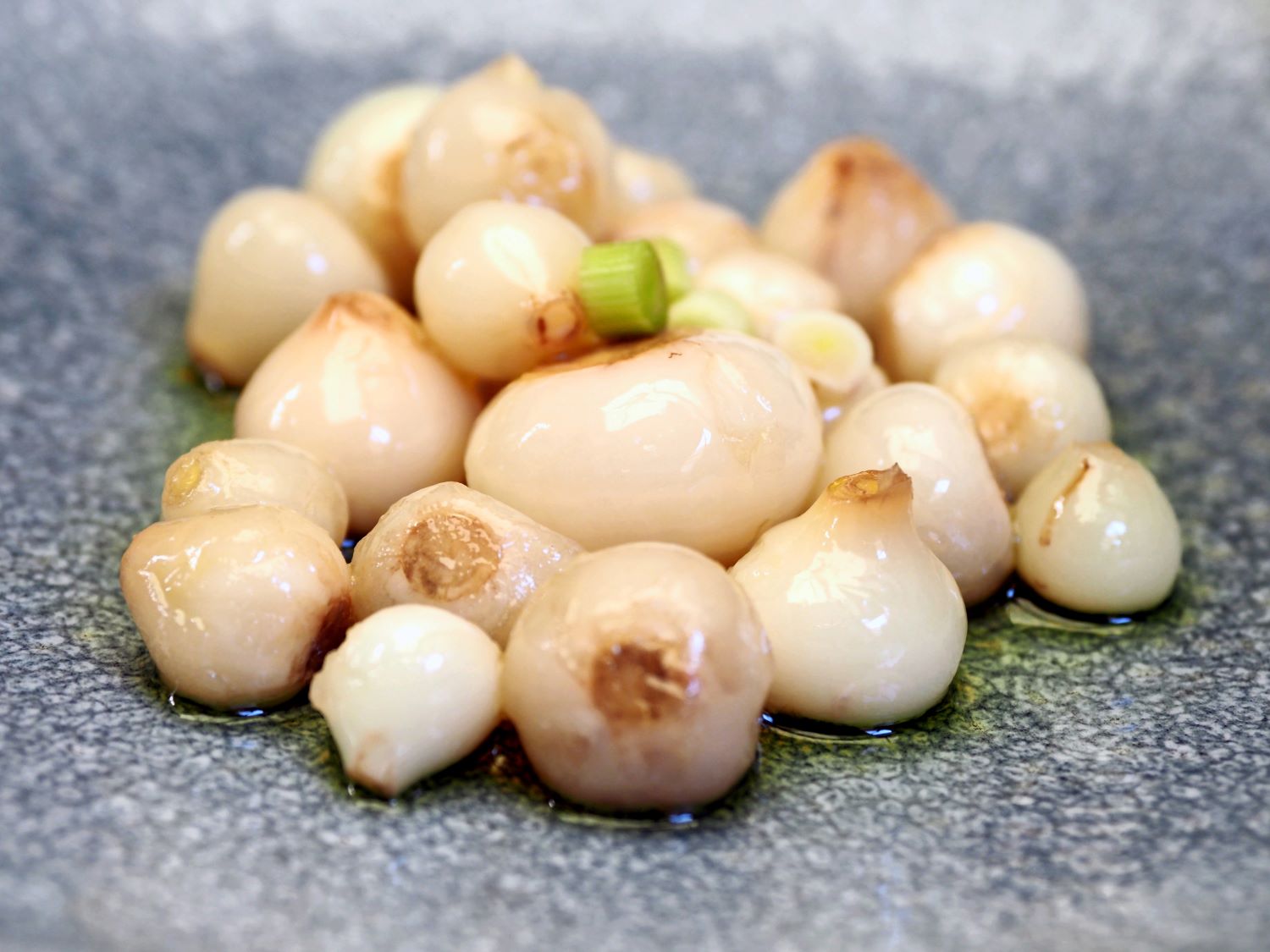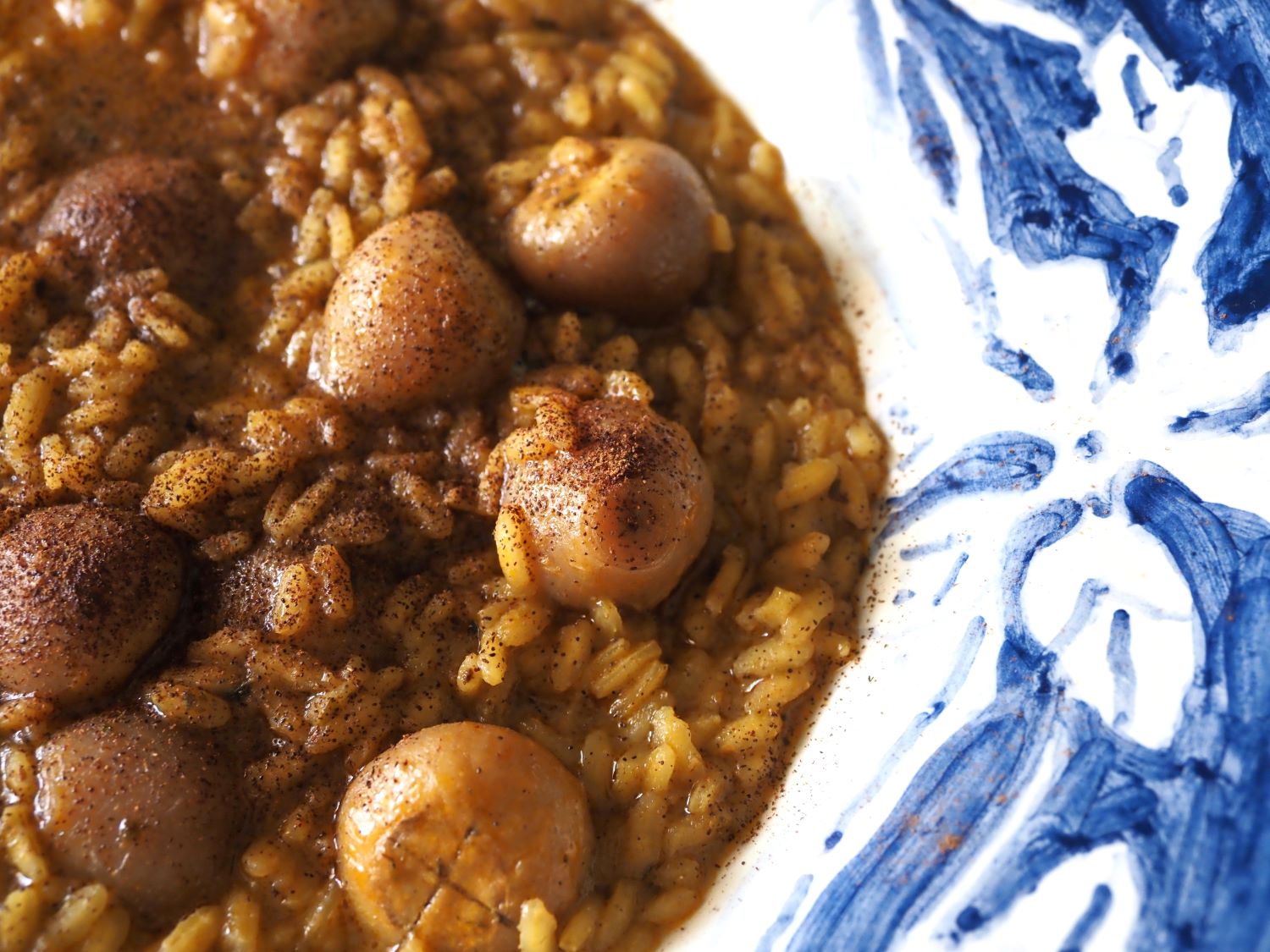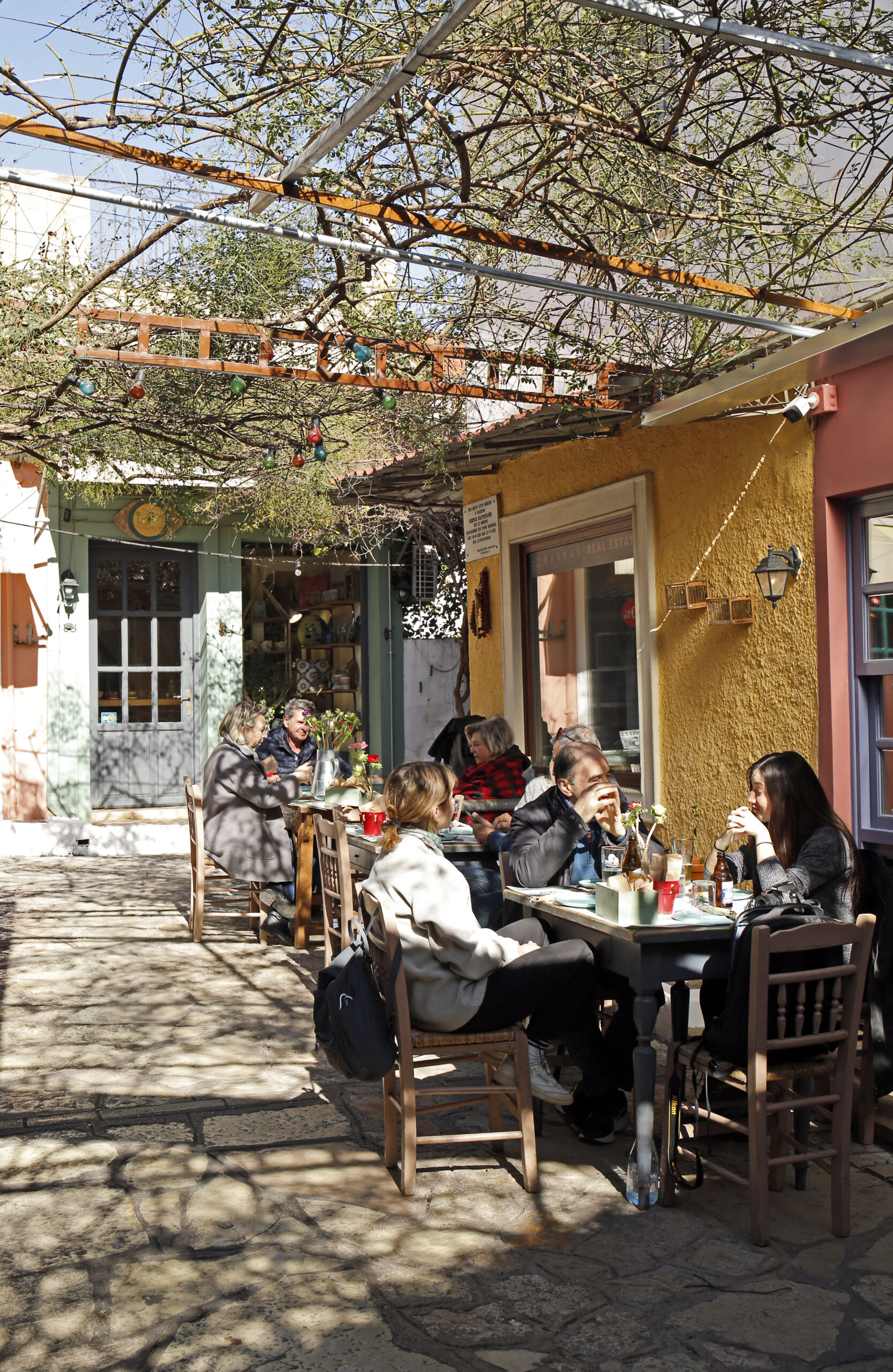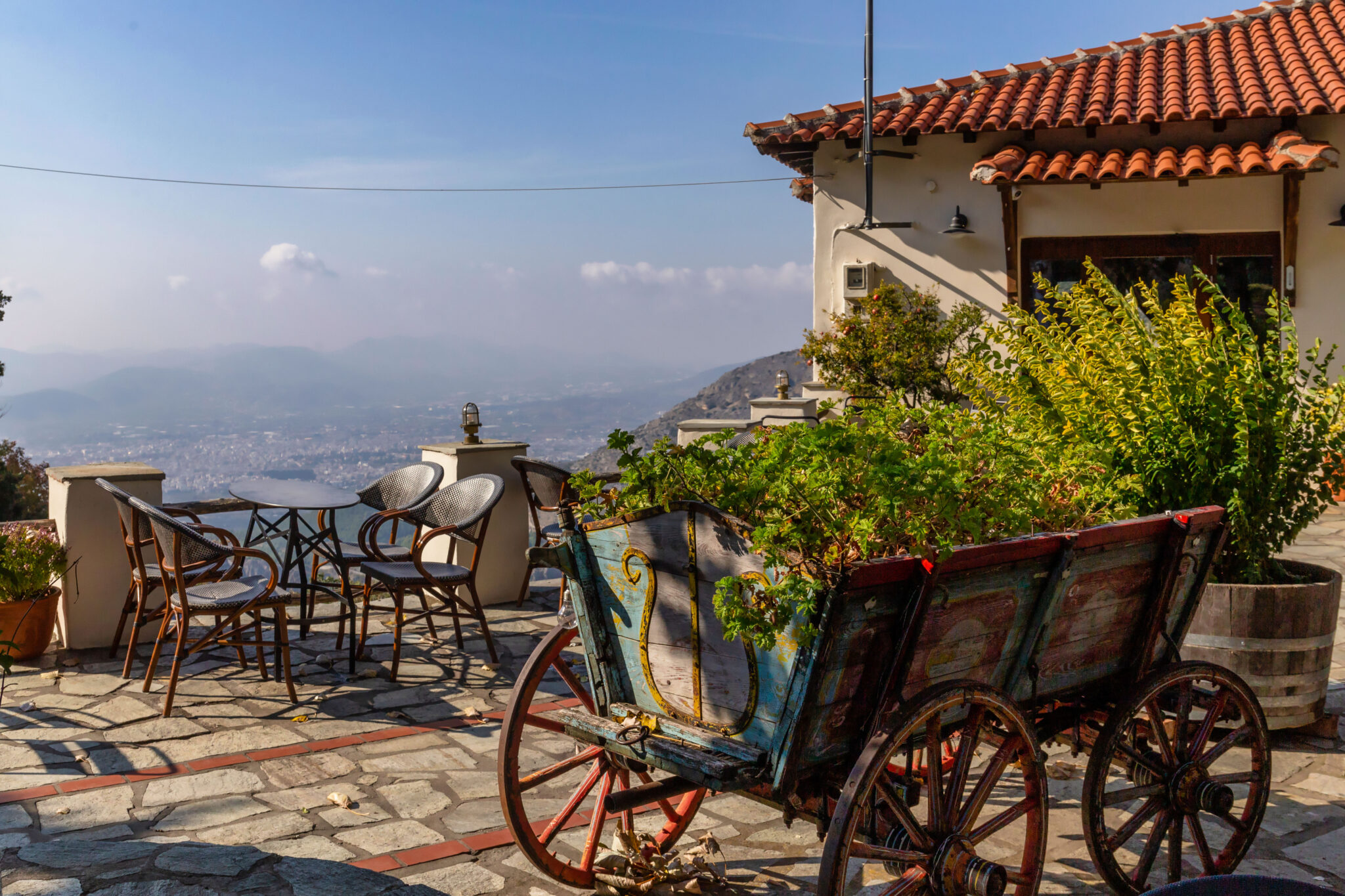September marks a fresh start in communities that live in harmony with nature and produce a significant portion of their own food, as it is thought of as the beginning of the productive year. In the countryside and rural areas, this onset is also marked by the sacred celebration of grape harvesting and the intoxicating alchemy of new wines, and the process of producing fresh distillations of raki, tsipouro, souma and divine olive oil. And with the season’s first rains, nature stirs from its summer slumber revealing a treasure trove for modern-day foragers: a bounty of mushrooms, snails, wild herbs, delectable plant shoots, and, of course, wild garlic.
The foraging period is arguably the most important period in human history. If one were to condense the journey towards humanity into a single day, our recorded history—dating back roughly 5,000 years to the Minoan and Cycladic civilizations—would be mere minutes before midnight. Throughout these millions of years, our bipedal ancestors instinctively evolved, aiming to become human. They succeeded in becoming a unique species, mainly because they devised an innovative way to secure more food with less effort.
The way we thought about sourcing our food shaped our evolution. As we nourished ourselves better, especially after discovering fire and cooking, our brains expanded, birthing new ideas and tools that went beyond simple hunting and gathering. The first step is always the hardest, which is why this primitive stage of food gathering remains etched in our collective memory. Even today, we circle back to it, reconnecting with nature, trying to grasp the essence of our humanity from its very beginning, hoping to become wiser.
Humanity’s Cognitive Revolution, the moment when thought overpowered instinct and culture was born, commenced 70,000 years ago. The Agricultural Revolution that followed 12,000 years ago wasn’t eclipsed by the Industrial Revolution a mere 500 years ago. Instead, it continues to hold its space, allowing us to maintain some contact with our natural surroundings.
Rural communities have always marked the beginning of essential food cycles around wine, olive oil, and bread. Whether ploughed by a living beast or tractor, the plough turns the soil, burying wheat and legume seeds, revealing edible roots and bulbs. These might not make up the main course, but they certainly grace our tables, harmonising beautifully with drinks like raki or tsipouro.
On a particular island, a wooden plough, reminiscent of the era described in Hesiod’s “Works and Days” and drawn by donkeys, unearthed ‘glykoxina‘ (sweet and sour), the succulent and tangy roots of sorrel. After the first rains, they’d push their four-leafed heads through the soil, blossoming with tiny yellow flowers come spring. We’d wash these glykoxina thoroughly to remove the clinging earth and eat them. So, when I saw pickled sorrel bulbs on a Clean Monday table in Skyros, influenced by the traditions of Geron and Korela, I was genuinely taken aback.
In Skyros, the ‘onions ‘kremmides‘– as they’re locally termed – were presented pickled, seasoned with oil and vinegar, accompanied by other preserved wild plants out of season, like caper leaves and sea samphire. They unearth these bulbs in spring, guided by their tall purple bloom. Here, however, they’d been harvested during ploughing season, desalted by boiling multiple times, then sealed in jars with vinegar and oil for pickling. This entire preparation process, maintaining its natural equilibrium, was highlighted by a contemporary forager from Rhodes, Yiannos: he unearthed them, boiled them two or three times not only to retain their numerous heart-healthy properties but also to mitigate their mild bitterness, and then sealed them in a jar with wine vinegar, a touch of water, and some oil.
Thus, an entire miniature world came to light. These bulbs are everywhere, a staple accompaniment on tables throughout Greece. In Cyprus, they’re called “skortalies“, in Peloponnese “volvus” or “brovia” (in Laconia they’re roasted, and the most delicious ones come from the red soils, with a bitterness that sweetens aftertaste). In Samos, they’re named “skordapsious” (cooked with a bread-based garlic sauce), in Halkidiki “kokkaria”, in Kefalonia “kaloiria”, in Kythira “vorvus”, in Skopelos “kroumdakia”, in Attica “vourvoulia“, in Messolongi “praslithres” or “onion herbs” (used in pies, soups, and even omelettes), in Oinousses “pospordylous” (a favourite among the Anatolians), in Goumenissa “wild onions” or “wild garlic” (their green shoots made into fasting meatballs), in Chania “brovious” and throughout Crete as “askordoulakous”.
“Oh, how utterly delicious they are!” people exclaim in Crete, especially if they’re from its snowy mountains, pearly white and buttery. They truly value them there (an indispensable part of an authentic Cretan meal) not just because they perfectly complement shots of raki. As the locals know better than anyone, askordoulakous pair brilliantly with meats, like chicken or rabbit, resulting in rich, comforting dishes. However, the combination that genuinely captivated us, prompting a culinary challenge, came from Kalymnos: octopus with bergious.
If wild garlic can be said to carry the earthy signature of the land, then octopus surely holds that of the sea. That very flavour comes alive in its independent preparation. Left whole in a pot, with a touch of olive oil, it faces the relentless heat. It simmers in its own juices, seasoned generously with oregano, crushed peppercorns, dried coriander, turmeric, and a couple of bay leaves. A splash of vinegar and a good deal of patience follow. The natural liquids of the freshly-caught octopus are enough to tenderise it and to create a rich sauce.
That sauce is elevated by the garlic, not wasted, but transformed after multiple boilings. They blend harmoniously with the potent juices (perhaps requiring a touch of dilution with warm water) and a honey gifted to us by Yannis and Konstantina from Archangelos, Rhodes. Once prepared, the octopus and select whole bulbs are reintroduced to the sauce, merging with its robust flavours. The kindness of Yannis and Konstantina, particularly their jar of pickled garlic cloves, inspired another dish marked by bulbs: a garlic risotto. We already had a rich broth at hand, made of chicken, fresh vegetables (tomatoes, courgettes, peppers, potatoes, dried onions, spring onions, and mushrooms), herbs (dill, parsley, celery, dried oregano twigs) and spices (bay leaves, turmeric, curry, freshly ground pepper, sweet paprika, ground oregano, white balsamic, apple vinegar, and red wine vinegar).
In a deep frying pan, garlic is sizzled in olive oil, seasoned with curry, turmeric, freshly ground pepper, sweet paprika, and oregano. Once they had taken on a rosy hue, they were set aside, making room in the pan for the specialist risotto rice. The heat at the base was quenched with apple vinegar, before the ritual began of ladling in the broth, one spoon at a time, stirring constantly. Each new ladle was added only once the preceding liquid had been absorbed. As we neared the dish’s completion, the garlic cloves were reintroduced to the risotto, joined by a generous spoonful of Cretan ‘staka‘ from Pantelis Kouvarakis’ dairy, located in Hamezi, in the land of Sitia. Upon serving, memories of a wedding feast on the island stirred, and the risotto was dusted with ground cinnamon, an evocative hint of grand, exotic voyages across the world’s oceans.
Nikos G. Mastropavlos is a journalist and the creator of eudemonia.gr, a website dedicated to celebrating the culture of everyday pleasures in Greece and Cyprus.



